A place in the sun
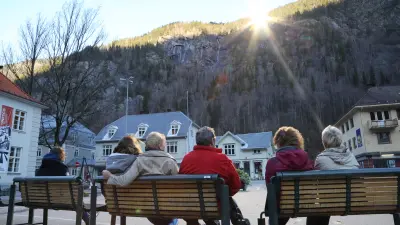
Winter in Rjukan, Norway, used to be one thing above all else: dark. For six months of the year, the sun doesn’t peek over the mountains. The cliffs are just too tall. But now three enormous mirrors reflect the sun's rays into the valley — controlled by technology from Bosch Rexroth.
Lights on: sun for a dark town
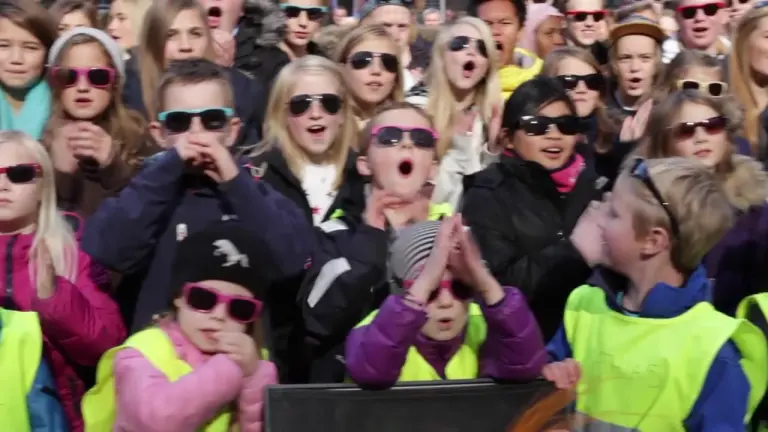
Loading the video requires your consent. If you agree by clicking on the Play icon, the video will load and data will be transmitted to Google as well as information will be accessed and stored by Google on your device. Google may be able to link these data or information with existing data.
Facts about heliostats
Three heliostats, each with an area of 17 square meters and weighing 500 kilograms, illuminate roughly 600 square meters of the town square. Throughout the day, the Bosch control system computes the current position of the sun and uses linear drives to align the mirrors so that the reflected rays of the sun illuminate the town square. The mirrors are mounted some 450 meters above the town, where the harsh climate poses the biggest challenge to operating the precision electric linear drives. The mirrors are frequently battered by winds up to force 12, with gusts of 140 kilometers per hour. The Rexroth control unit is not only capable of weathering these conditions, but is also designed for convenient remote maintenance.
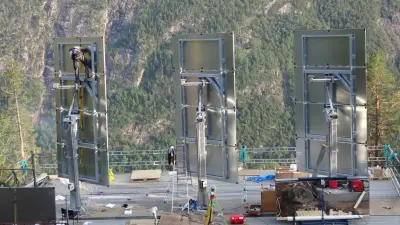
51 square meters
measure the three heliostats together
How Bosch technology brightens up life in Rjukan
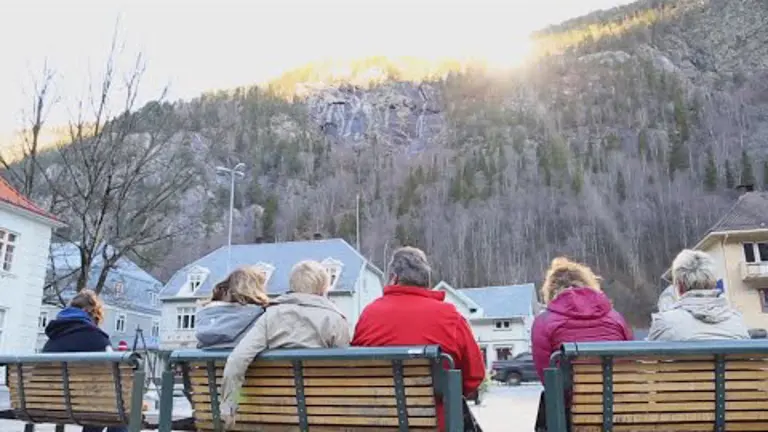
Loading the video requires your consent. If you agree by clicking on the Play icon, the video will load and data will be transmitted to Google as well as information will be accessed and stored by Google on your device. Google may be able to link these data or information with existing data.

We feel united in a way, because we have got something very, very special up in the mountain there.
An inspiring solution
Martin Andersen, the artist who had the idea of the solar mirrors: “Journalists from all corners of the globe — from the ‘New York Times’ to ‘Al Jazeera’ — came to see the unveiling of the mirrors. The attention we received and the sparkle in people’s eyes gave me a great deal of confidence in my work as an artist.”
Steinar Berglund, mayor: “Before, we had to take the cable car up to the top of the mountain if we wanted to feel the sun on our faces in winter. Although we can’t illuminate the whole town with the mirrors, we have at least brought light into the town square. It makes me happy to look out of my window and see the people sitting on benches soaking up the sun.”
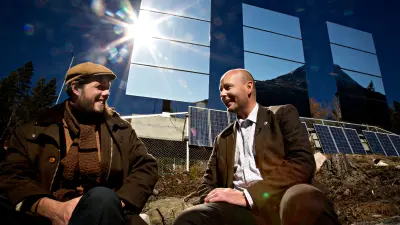

Sometimes I just take a cup of tea with me and go out and enjoy the warmth.
Summary
For a long time, the winters in Rjukan were dark. But now, three huge heliostats reflect the sunlight and illuminate the town square. For the inhabitans of Rjukan, this means a higher quality of life.